Are there really no more discoveries in human anatomy? In this episode, I'll review some recent discoveries: the rise of the fabella, macrophage barriers, the interstitium, button and zipper junctions, lymph node micro-organs, new vessels in bones, and tubarial salivary glands.
00:00 | Introduction
00:41 | Is Anatomy Finished?
03:44 | Sponsored by AAA
04:16 | Rise of the Fabella
11:52 | Sponsored by HAPI
12:38 | Macrophage Barriers
23:18 | Sponsored by HAPS
23:55 | Interstitium
27:48 | Button and Zipper Junctions
35:28 | Lymphatic Micro-Organ
40:05 | Free Update Newsletter
41:05 | New Vessels in Bones
44:44 | Tubarial Salivary Glands
52:37 | Staying Connected
★ If you cannot see or activate the audio player, go to: theAPprofessor.org/podcast-episode-105.html
🏅 Apply for your credential (badge/certificate) for listening to this episode: theAPprofessor.org/podcast-episode-105.html/#badge
❓ Please take the anonymous survey: theAPprofessor.org/survey
☝️ Questions & Feedback: 1-833-LION-DEN (1-833-546-6336)
✔️ Follow The A&P Professor on Twitter, Facebook, Blogger, Revue, Tumblr, or Instagram! @theAPprofessor
📰 Get the almost-daily TAPP Science & Education Updates theAPprofessor.org/updates
It is not over, unless you stop trying. (Nabil N. Jamal)
Is Anatomy Finished?
3 minutes
It's easy to fall into that mindset that anatomy is "finished"—that there are no new discoveries to be made in the structure of the human body. But that's simply not the case. In this episode, Kevin reviews seven anatomical discoveries discussed in the last few years of this podcast.
Sponsored by AAA
0.5 minutes
A searchable transcript for this episode, as well as the captioned audiogram of this episode, are sponsored by the American Association for Anatomy (AAA) at anatomy.org.
Don't forget—HAPS members get a deep discount on AAA membership!
Rise of the Fabella
7.5 minutes
The fabella (pl., fabellae) is a small, beanlike bone that may (or not) occur behind the knee joint. Recent evidence shows that it's showing up more frequently in the population. Why?
T★ he original version of this segment aired in Anatomic Variations in Humans | Fabella | Situs Inversus | Episode 43
★ Fabella prevalence rate increases over 150 years, and rates of other sesamoid bones remain constant: a systematic review (recent research article) my-ap.us/2WkRSMs
★ Sore knee? Maybe you have a fabella (plain English report from the BBC) my-ap.us/2Wmd6cN
★ Fabella x-radiograph (to use in your course) my-ap.us/2Wm6Di3
★ An illustration you can download as a PDF and use is available in the free TAPP APP theAPprofessor.org/TAPPapp
★ Improbable Destinies: Fate, Chance, and the Future of Evolution by Jonathan B. Losos (book on updated ideas of evolution) amzn.to/2L9fzCE
★ ★ Browse The A&P Professor Book Club my-ap.us/bookclub
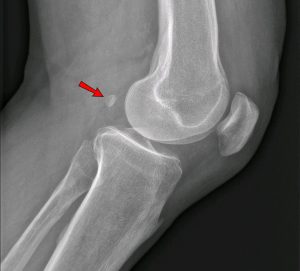 Fabella image: Jmarchn (my-ap.us/2Wm6Di3)
Fabella image: Jmarchn (my-ap.us/2Wm6Di3)
Sponsored by HAPI Online Graduate Program
0.5 minute
The Master of Science in Human Anatomy & Physiology Instruction—the MS-HAPI—is a graduate program for A&P teachers, especially for those who already have a graduate/professional degree. A combination of science courses (enough to qualify you to teach at the college level) and courses in contemporary instructional practice, this program helps you be your best in both on-campus and remote teaching. Kevin Patton is a faculty member in this program at Northeast College of Health Sciences. Check it out!
Barrier Macrophages
10.5 minutes
We knew there were macrophages within, and upon, the synovial membrane that lines synovial joints. What we have just learned is that macrophages on the synovial membrane surface can bind with tight junctions to form a barrier layer. Go figure.
★ The original version of this segment aired in More on Spelling, Case, & Grammar | Episode 56
★ Macrophages form a protective cellular barrier in joints (news summary) my-ap.us/33KVuLm
★ Locally renewing resident synovial macrophages provide a protective barrier for the joint (research article) my-ap.us/33H5e9H
Sponsored by HAPS
0.5 minute
The Human Anatomy & Physiology Society (HAPS) is a sponsor of this podcast. You can help appreciate their support by clicking the link below and checking out the many resources and benefits found there. Watch for virtual town hall meetings and upcoming regional meetings!
Interstitium
3.5 minutes
Has a new human organ discovered? Or is this news mostly hype? Or is the answer somewhere in the middle?
★ The original version of this segment first aired in Test Debriefing Boosts Student Learning | Episode 11
★ Structure and Distribution of an Unrecognized Interstitium in Human Tissues (original research report)
★ Newly-discovered human organ may help explain how cancer spreads (article about the original report)
★ That “New Organ” Everyone Is Freaking Out About Is Probably Not New (article outlining criticism of the original report)
★ Is the Interstitium Really a New Organ? (another article interprets the original report)
★ Is This Tissue a New Organ? Maybe. A Conduit for Cancer? It Seems Likely. (yet another opinion)
★ The Human Organ Discovered in 2018 (and we have another opinion)
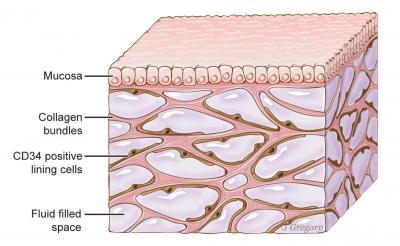 Interstitium. Illustration by Jill Gregory. Printed with permission from Mount Sinai Health System, licensed under CC-BY-ND.
Interstitium. Illustration by Jill Gregory. Printed with permission from Mount Sinai Health System, licensed under CC-BY-ND.
Button and Zipper Junctions
7.5 minutes
Are you familiar with the button junctions that connect overlapping endothelial cells in lymphatic capillaries in a way that forms valves? What about zippers? Where do they fit into the story? (They do.) Here are some links to the details behind a great demo that Kevin shares for understanding lymphatic structure and function.
★ The original version of this segment aired in Promoting Academic Integrity in Our Course | Episode 25
★ Functionally specialized junctions between endothelial cells of lymphatic vessels (2007 research article outlining button and zipper junctions; great images)
★ Plasticity of button-like junctions in the endothelium of airway lymphatics in development and inflammation. (2012 research article shows that zippers predominate in early development, but are then convert to buttons; also has some really cool images showing these junctions)
★ Lacteal junction zippering protects against diet-induced obesity (2018 research article)
★ ★ Tighter lymphatic junctions prevent obesity (perspective and summary of the research article; includes a nice slide you can use in teaching)
Lymphatic Micro-Organ
4.5 minutes
One headline announced the discovering of a new human micro-organ. It turns out, researchers have found a distinct structure just beneath the capsule of lymph nodes called the subcapsular proliferative focus (SPF) where memory B cells hang out—not deep in the germinal center (GC). This puts them in a good position to be activated by macrophages acting as antigen-presenting cells (APCs) and mount a strong secondary immune response.
★ The original version of this segment first aired in Modeling Professional Integrity | Episode 26
★ Researchers Discover New ‘Micro-Organ’ in Human Immune System (news item about the discovery)
★ Memory B cells are reactivated in subcapsular proliferative foci of lymph nodes (research article from Nature Communications)
★ Second Harmonic Generation Imaging Microscopy: Applications to Diseases Diagnostics (describes the SHG method used to visualize the lymph node cells; see image)
Free Update Newsletter from The A&P Professor
1 minute
A newly envisioned, newly styled, digital newsletter from The A&P Professor features news stories and updates in human science and education curated by Kevin Patton. To get your copy 2-3 times each week—or to simply check out previous editions—of this free newsletter, go to theAPprofessor.org/updates
[revue_subscribe]
New Vessels in Bone
3.5 minutes
Scientists have discovered a system of small vessels that cross every part of a bone's cortical layers to supply most of the bone's blood—over 80% of the arterial supply and 59% of venous drainage. The proposed name is trans-cortical vessels (TCVs).
★ The original version of this segment aired in Big Year in Anatomy & Physiology Teaching with The A&P Professor | Episode 36
★ We’ve discovered a new type of blood vessel in our bones (brief article summarizing the discovery) my-ap.us/2B6tHce
★ A network of trans-cortical capillaries as mainstay for blood circulation in long bones (full research article) my-ap.us/2B6ttSq
★ Video (gif) showing a virtual trip through a TCV my-ap.us/2B6XX6H
Tubarial Salivary Glands
8 minutes
A recent paper proposes the existence of a new organ—the paired tubarial salivary gland. It's suggested that this be added as a major salivary gland along with the parotid, submandibular, and submaxillary salivary glands.
★ The original version of this segment aired in New Organ | Dam Protons | Our Secret Language | TAPP 80
★ The tubarial salivary glands: A potential new organ at risk for radiotherapy (original research article) my-ap.us/3khGFZe
★ Doctors May Have Found Secretive New Organs in the Center of Your Head (newspaper article) my-ap.us/31L4RvV
★ Cancer researchers discover new salivary gland (press release about discovery) my-ap.us/3m9mc9w
★ Image: my-ap.us/3jgsO3T (CC license)
If the hyperlinks here are not active, go to TAPPradio.org to find the episode page.
★ More details at the episode page: theAPprofessor.org/podcast-episode-105.html
★ Transcript available in the transcript box: theAPprofessor.org/podcast-episode-105.html
★ Need help accessing resources locked behind a paywall? Check out this advice from Episode 32 to get what you need! my-ap.us/paywall
Take The A&P Professor experience to the next level!
★ theAPprofessor.org/community
Earn cash by referring other A&P faculty to this podcast:
Tools & Resources
★ TAPP Science & Education Updates: theAPprofessor.org/updates
★ Amazon: amzn.to/2r6Qa3J
★ Text Expander: theapprofessor.org/textexpander
★ Rev.com: try.rev.com/Cw2nZ
★ Snagit & Camtasia: techsmith.pxf.io/9MkPW
★ Krisp Free Noise-Cancelling App: theAPprofessor.org/krisp
★ JotForm (build forms for free): theAPprofessor.org/jotform
★ The A&P Professor Logo Items: https://www.teepublic.com/stores/the-a-p-professor
Sponsors
★ Transcript and captions for this episode are supported by the American Association for Anatomy | anatomy.org
★ The Human Anatomy & Physiology Society provides marketing support for this podcast | theAPprofessor.org/haps
★ Distribution of this episode is supported by the Northeast College of Health Sciences online graduate program in Human Anatomy & Physiology Instruction (HAPI) | northeast.edu/hapi
Clicking on sponsor links helps let them know you appreciate their support of this podcast!
Follow The A&P Professor on Twitter, Facebook, Blogger, Revue, Tumblr, or Instagram @theAPprofessor
The A&P Professor® and Lion Den® are registered trademarks of Lion Den Inc. (Kevin Patton)
As an Amazon Associate I earn from qualifying purchases. I may be compensated for links to sponsors and certain other links.
Click here to listen to this episode—or access the detailed notes and transcript.



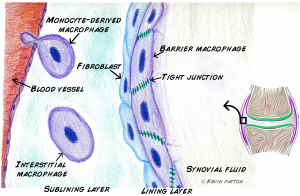

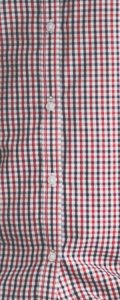
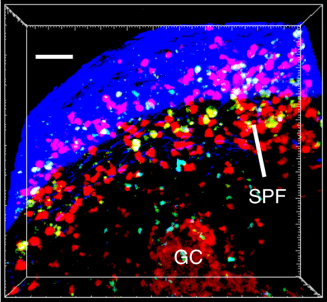

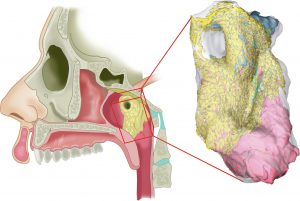
No comments:
Post a Comment